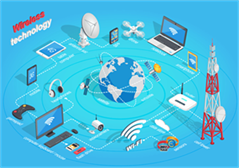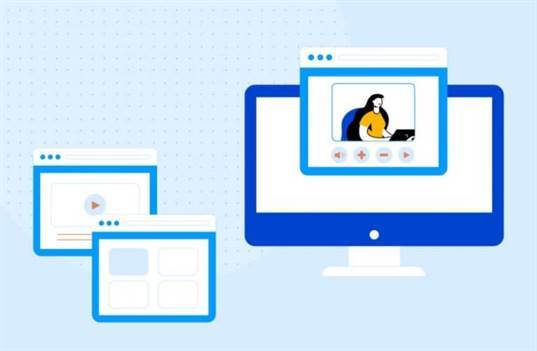Содержание
The three common cloud computing models each have unique features and help solve specific business needs in particular ways. Organizations, including those in the public sector, are commonly deploying numerous clouds and using various service models. It’s undeniable that cloud computing has changed the way that businesses go to market. With the cloud, organizations are now able to gain new efficiencies, quickly deploy IT services, and transform their operations. Everything from human resources, financial reporting, supply chains, to simple mobile applications have benefited from cloud deployments.

Although this is intended to reduce the operational burden on end users, the loss of operational control may affect how PaaS solutions are managed, provisioned, and operated. Utilizing PaaS is beneficial, sometimes even necessary, in several situations. For example, PaaS can streamline workflows when multiple developers are working on the same development project.
Cloud Service Models Explained: Saas Vs Paas Vs Iaas Vs Dbaas
As well as reducing costs, this cloud service can simplify some challenges you may face when rapidly developing or deploying applications. In contrast to SaaS, PaaS is a platform for building software rather than delivering the software online. Because the platform https://globalcloudteam.com/ is delivered via the web, developers are free to focus on building the software without worrying about updating operating systems, storing data, or configuring infrastructure. But in some cases, any of the three ‘as-a-service’ models will offer a viable solution.

That’s why businesses should look to PaaS, which offers additional benefits in a complete cloud solution. CaaS is a cloud service model created to let customers deploy and manage applications through container-based abstraction using data centers or the cloud. Comparing the advantages of SaaS PaaS IaaS, it is important to acknowledge that each provides unique features and functionalities, which is why understanding these differences is crucial. SaaS services are controlled and operated by vendors, so customers depend on the vendors to maintain security and reliability. A third-party provider will be entrusted with sensitive information, which means you cannot afford to choose an approach with inadequate security.
Iaas Versus Paas Versus Saas
Adding a cloud to an onsite data center or off-premises data center increases the complexity, which may influence which apps and services can be used with PaaS. Integrating legacy IT components with cloud services can be challenging, especially when not all components were built for cloud computing. Platform as a Service is a service that provides cloud components to certain software, primarily for use in applications.

Minor enhancement to legacy apps may be required before migrating them to the cloud, possibly leading to new security issues unless adequately tested for security and performance in the IaaS systems. Cloud infrastructure services, known as Infrastructure as a Service , are made of highly scalable and automated compute resources. IaaS is fully self-service for accessing and monitoring computers, networking, storage, and other services. IaaS allows businesses to purchase resources on-demand and as-needed instead of having to buy hardware outright.
Saas Versus Paas Versus Iaas: Management Ease Versus Complete Control
There is a database manager that handles information within the database and monitors operations. The cloud servers are presented as an interactive dashboard connected with API for respective components. It is like having a data center without actually having to own an actual data center – it is outsourced to the “virtual data center” located on the cloud. Startups and small scale companies use IaaS to avoid hardware and software expenses.
With PaaS, you are able to use the cloud-based platform as a foundation for building software. SaaS, also known as cloud application services, is the most commonly used service within the cloud market. SaaS platforms make software available to users over the internet, usually for a monthly subscription fee. Customized cloud operations with management automation workflows may not apply to PaaS solutions, as the platform tends to limit operational capabilities for end users.
You can use only the infrastructure you need to create your development environment—and scale it up or down—for as long as you need it, and then you can stop when you’re finished, paying only for what you use. IaaS gives you flexibility to purchase only the components you need SaaS vs PaaS vs IaaS and scale them up or down as needed. There’s low overhead and no maintenance costs, making IaaS a very affordable option. We’ll cover each type of model, the benefits, and how you can use any or all of them to create a cloud-computing environment that meets all of your needs.
SaaS utilizes the internet to deliver applications, which are managed by a third-party vendor, to its users. A majority of SaaS applications run directly through your web browser, which means they do not require any downloads or installations on the client side. Microsoft Office 365 is a SaaS that provides these types of services, which include SharePoint Online, Exchange Online, Lync Online and Office Professional Plus. Most of these online services have a subset of the features available on their on-premises counterparts.
The state of the PaaS business model and market in 2022 – TechTarget
The state of the PaaS business model and market in 2022.
Posted: Mon, 31 Jan 2022 08:00:00 GMT [source]
PaaS is a good option for developers who do not want to spend money on expensive platforms for their projects. In the cloud computing industry, “XaaS” is also known as “Anything as a Service” . The cloud is the future for business and technology, regardless of which option you choose.
All your staff will have personalized logins suitable to their access level. You no longer need to engage an IT specialist to download the software onto multiple computers throughout your office or worry about keeping up-to-date software on every computer. SaaS, PaaS and IaaS present three modern but different ways to describe how you can use the cloud for your business. These platforms have grown significantly over the last decade, with its worldwide revenue increasing from around $90 billion in 2016 to more than $312 billion in 2020. Muhammad Raza is a Stockholm-based technology consultant working with leading startups and Fortune 500 firms on thought leadership branding projects across DevOps, Cloud, Security and IoT.
Saas
However comparing with other XaaS, IaaS is more difficult to maintain and it requires a good DevOps engineer who configures the virtual machines to work efficiently and securely. It’s important to note, that since moving to the cloud is a hard, resource-consuming process, it’s key to prepare the application accordingly ahead of time. The process of making the product ready for the switch may include dealing with technical debt, that earlier was put aside.

It’s a pay-as-you-go service where a third party provides you with infrastructure services, like storage and virtualization, as you need them, via a cloud, through the internet. With IaaS, administrators gain more direct control over operating systems. On the other hand, users gain greater flexibility and control over proprietary applications or programs with PaaS.
Iaas Vs Paas Vs Saas
For example, you can run web applications with the Web Role, as well as host middle tier applications, such as Workflow, in the Worker Role. Similarly, SQL Azure provides Microsoft’s core relational database engine as a platform service. Provides the leverage of cloud-based blockchain solutions to build, host, and operate apps. A full cloud recovery enables a business to recover from service disruption, a natural disaster, or a human error at one location. Although feedback analyses state that DRaaS is still difficult to use, many companies are interested in it.
You will no longer need to place trust in an external IT contractor — you can access and oversee IaaS products yourself if you wish, without being an IT wiz. No matter which option you choose, migrating to the cloud is the future of business and technology. Anytime you are unsure of a new application’s demands, IaaS offers plenty of flexibility and scalability. Companies experiencing rapid growth like the scalability of IaaS, and they can change out specific hardware and software easily as their needs evolve. CMSWire’s customer experience channel gathers the latest news, advice and analysis about the evolving landscape of customer-first marketing, commerce and digital experience design.
- With both IaaS and SaaS, the cloud service providers manage servers, networking, virtualization and storage.
- The Cloud provider will typically bill you on computing power by the hour and the amount of resources allocated and consumed (as per its service level agreement .
- Cloud platform services, also known as Platform as a Service , provide cloud components to certain software while being used mainly for applications.
- SaaS, Paas, IaaS are not mutually exclusive; most organizations use more than one, and many larger organizations today use all three, often in combination with traditional IT.
- Office 365 is SaaS,which provides an online version of MS Office Suite along with SharePoint Server, Exchange Server and Lync Server.
- WithIBM Code Engine, a fully managed, serverless platform, IBM Cloud Code Engine will manage and secure the underlying infrastructure for you.
While IaaS provides the necessary infrastructure or hardware to the business, PaaS provides the platform for the developers with the necessary tools that will help them in creating blockchain apps. Finally, SaaS can be thought of as a hosting service for the blockchain application which connects the end-users with the app through the internet. Delivered as Infrastructure as a Service or IaaS which offers very similar services to that of cloud-based IaaS, but only better and based on a decentralized environment. It basically implies the delivery of services through a complete on-demand computing infrastructure. Simply put, the enterprise can use this service and use the hardware infrastructure without having to buy or own it. The on-premises computing hardware is a major advantage for the companies; they do not have to worry about things like deployment, maintenance, and operations of the infrastructure.
Platform-as-a-service handles cloud-related operations, such as managing operating systems, providing virtualization, maintaining servers, serving storage units, and overseeing networking. At the same time, the customer can focus on the development of the application. Instead of a dedicated product designed for specific purposes, the PaaS vendor provides a framework in which the customer can do their own thing. Build out backend IT infrastructure on the cloud using IaaS, and use it to build its own development platform and application.
When it comes to security there is some issue that lies in all three types of blockchain service. While IaaS has a security issue that might occur in data communications between virtual machines and host infrastructure, PaaS has limited transparency for the user to see how their data is being handled in the backend. Therefore, there will always be a change in data leakage or privacy issues. SaaS on the other hand has a different security issue where it completely depends on the vendor and the kind of security and privacy they provide to the user. But also helps companies to move to the blockchain platform at an affordable cost. Since the entire IaaS is based on a cloud platform, the companies can simply manage and control the infrastructure through a dashboard or API.
Microsoft offers impressive Cloud services based on its widely used on-premises software products. Faster creation and deployment of apps, including a faster testing process leading to reduced or no bugs. There may be a time in the future when the business and technical requirements that drive a particular PaaS solution won’t apply.
Version control — you can use a platform like GitHub, BitBucket, GitLab or just have a version control of documents on Google Docs or Confluence. Increased collaboration — e.g., a Google sheet can be edited by many users even when providing various levels of permissions for them. The basic set of features presented in the freemium version is then supplemented and expanded in the higher tiers. SaaS, Paas, IaaS are not mutually exclusive; most organizations use more than one, and many larger organizations today use all three, often in combination with traditional IT. The greatest difference between IaaS and PaaS comes from who controls the system. If you want out-of-the-box features, without the hassle of installations, then SaaS may be the best option for you.
